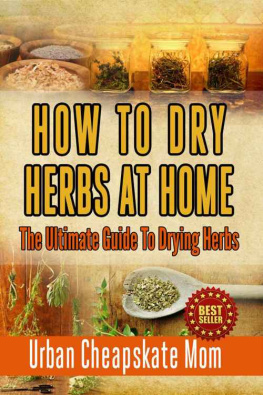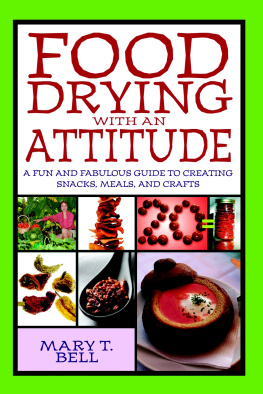

This is dedicated to the hope that food drying will find a welcome place in everyones kitchen and that every farmers' market will have at least one dried food vendor. And with heart and soul, I pray that we all embrace a variety of ways to live more sustainable lives.
Copyright 2022 Mary T. Bell
Previously published as Food Drying with an Attitude.
All rights reserved. No part of this book may be reproduced in any manner without the express written consent of the publisher, except in the case of brief excerpts in critical reviews or articles. All inquiries should be addressed to Skyhorse Publishing, 307 West 36th Street, 11th Floor, New York, NY 10018.
Skyhorse Publishing books may be purchased in bulk at special discounts for sales promotion, corporate gifts, fund-raising, or educational purposes. Special editions can also be created to specifications. For details, contact the Special Sales Department, Skyhorse Publishing, 307 West 36th Street, 11th Floor, New York, NY 10018 or .
Skyhorse and Skyhorse Publishing are registered trademarks of Skyhorse Publishing, Inc., a Delaware corporation.
Visit our website at www.skyhorsepublishing.com.
10 9 8 7 6 5 4 3 2 1
Library of Congress Cataloging-in-Publication Data is available on file.
Photos by Mary T. Bell, Joe Deden, Ecopolitan, NESCO American Harvest, istockphoto, and stock.xchng.
Print ISBN: 978-1-5107-6948-9
Ebook ISBN: 978-1-5107-6961-8
Printed in China
Thank You All
B ushels of thanks go to my husband, Joe Deden. He is a willing taste tester, photographer, consultant, fellow gardener, food preservation partner, sustainable quester, and friend.
One of my best food consultants is my mother-in-law, Adeline Deden. Although she has lost most of her sight and cannot read recipes, her memory serves her well, she has a good palate, and she can feel when the texture is just right.
My best taste testers are Hunter and Alysse, our treasured grandchildren. Alysse gleefully strips rhubarb leather off the dehydrator trays and gobbles it up and Hunter loves to sample jerky.
The quest for good food is growing as people assess the value of what they consume and the link between food and good health. Much of the credit for this shift in consciousness goes to the influential chefs who use and celebrate organic and locally grown food in their restaurants. These culinary trailblazers have modeled an ethic of stewardship, healthfulness, and creativity that has helped to promote environmental thoughtfulness and food awareness.
I am proud and grateful to live in a rural community where there is a growing appreciation for the quality of our soil, our air, and our water. Our commitment to the environment was put to the test a few years ago when the worlds largest tire burning plant was scheduled to be built only a few miles upstream from our community. People rallied and, thank goodness, stopped the tire-burning project in its tracks. Since this victory, people in our community have steadily worked to embrace more sustainable ways of living.
This project was strengthened by the editorial contributions and emotional support from Mary Musielewicz, Shayla Gehrke, Nancy Martinson, Maggie Molyneaux, and my long-time, dear friend Ray Howe. Thanks to the folks at Nesco, especially Kurt Jansen, who magically transformed our homegrown photography with his patience and healing brush. Maxxx Madcap gets credit for the illustrations. This project was initiated by and thanks to the work of Paige Cram, Abigail Gehring, Tony Lyons, and Bill Wolfsthal of Skyhorse Publishing. And I am grateful to Duane Peterson for being one of the kindest people Ive ever met.
Buffalo Bird Woman
One of my mentors has been Buffalo Bird Woman. She lived a hundred years ago and was one of the last Native American women to garden in the traditional Hidatsa/Mandan manner in southwestern North Dakota. Dr. Gilbert Wilson, a University of Minnesota anthropologist, recorded her knowledge in his book Buffalo Bird Womans Garden. This book provides a rare and valuable window into the past by clearly documenting specific details of how Native Americans grew, harvested, dried, stored, and cooked their food. Buffalo Bird Woman gardened in the ways of the people of the Great Plains, who farmed in the same manner for a thousand years. As a messenger of the old ways, she detailed how to build drying platforms, the best days to dry corn, beans, squash, buffalo, serviceberries, prairie turnips, and more. She cached food for two years in case the next growing season was a failure.
One of my favorite Buffalo Bird Woman stories is about her garden. Along with the other women we would sit in the watching platform to oversee our gardens, she said. We cared for our corn in those days as we would care for a child; for we Indian people loved our gardens, just as a mother loves her children. And we thought that our growing corn liked to hear us sing, just as children like to hear their mothers sing to them. Also, we did not want the birds to come and steal our corn.

Introduction
F ood Drying with an Attitude has something for everyone: vegetarians, natural food enthusiasts, omnivores, hunters, fishermen, raw food enthusiasts, gourmet cooks, gardeners, farmers, hikers, bicyclists, and even fast food junkies. Children will learn how easy it is to make yummy fruit roll-ups and sweet, healthy treats. Dog, cat, and bird lovers will find out how to dry treats for their special friends. For those with a creative flair, a dehydrator is a fabulous tool offering limitless artistic opportunities.
This book is the culmination of more than thirty years of drying food. Within these pages you will find a wide variety of recipes, along with straightforward and practical techniques and instructions.
Youll learn how to:
Make great jerky, a wildly popular, low-fat, high-protein fast food.
Save money and promote good health by drying fresh, frozen, or canned fruits and vegetablesfrom apples to watermelon, asparagus to zucchini.
Dry locally grown, in-season, chemical-free, and preservative-free food.
Dry fruit and vegetable pures, from applesauce to thick liquids such as spaghetti sauce and soup.
Make exotic and nutritious raw foods.
Prepare lightweight, portable dried foods to take along when adventuring in the great outdoors.
Cook and bake with dried foods.
Make terrific dried food powders.
Dry herbs and flowers.
Treat your pet with homemade goodies.
Make great gifts and home decorations.
For over three decades I have promoted food drying throughout North and Central America. My husband and I live at Eagle Bluff Environmental Center in rural Lanesboro, Minnesota. Our constant goal is to do our best to minimize the demands we make on this planet and to live thoughtful, respectful, and sustainable lives.

We use our food dehydrators throughout the year. My husband hunts, so each fall we butcher deer and make lots of jerky. During the winter we buy overripe bananas from our local grocer and dry them instead of baking cookies. In spring we pick and dry watercress from a cold stream to use in salads throughout the year. We dry asparagus and hunt for morel mushrooms. Then our gardening cycle begins with raking, tilling, and planting. After tending and harvesting, we dry, can, and freeze the bounty and sell our excess at the farmers market. I have more than a hundred rhubarb plants from which I make a dried rhubarb sauce called Rhubarb Lace that sells like hot cakes at market. All year long we use the food we dry as snacks and in cooking and baking. My husband and I value spending time in the kitchen together and we enjoy feeding our family and friends good food.
Next page
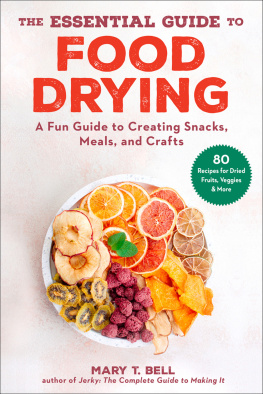
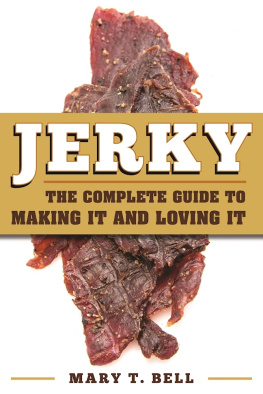




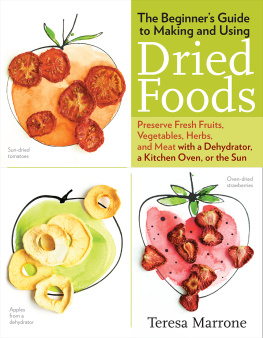
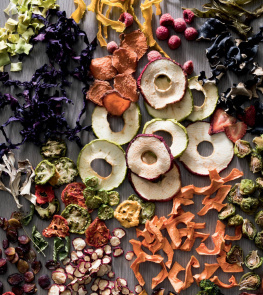
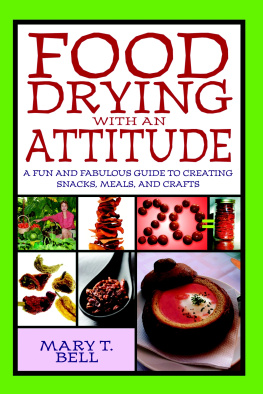
![Tammy - The ultimate dehydrator cookbook : [the complete guide to drying food, plus 398 recipes, including making jerky, fruit leather, and just-add-water meals]](/uploads/posts/book/102970/thumbs/tammy-the-ultimate-dehydrator-cookbook-the.jpg)
